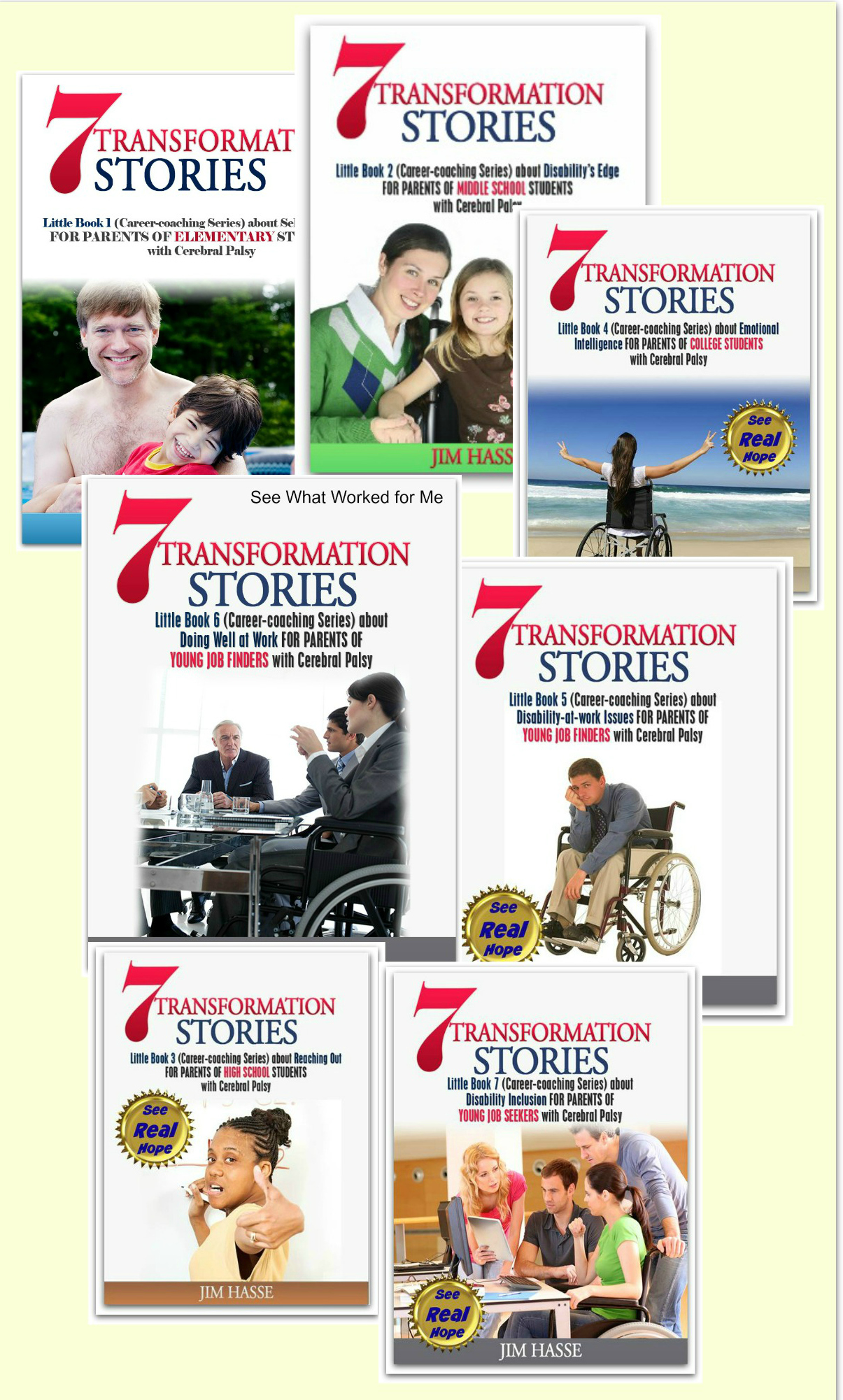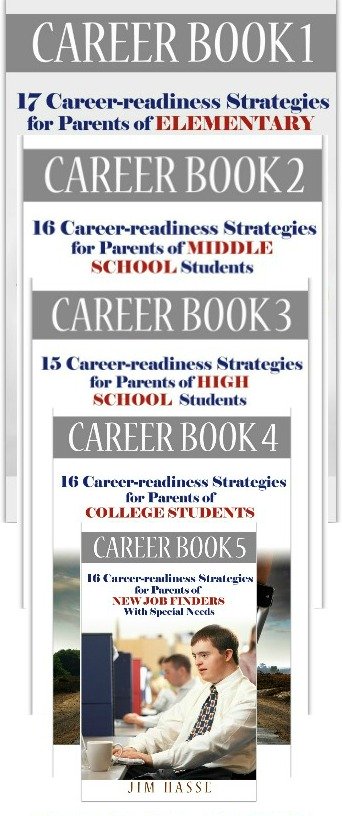LinkedIn: Cerebral Palsy
Career Builder
for College Students
By Jim Hasse, ABC, GCDF, Disability Employment Expert
_________________________________________________________
I was updating my LinkedIn
connections as I was watching CNN the other day, and
I heard one of the commentators say this:
“There are three things today’s employers want in a
job candidate:
“First, your ideas for making their businesses better.
“Second, key contacts for helping them extend the success of their businesses.
"Third, some measure of how much money you can make or save for their businesses.”
A couple of days after the CNN TV program, I realized it had some relevance to what I had just also learned about LinkedIn. LinkedIn can help prepare your college student with cerebral palsy (CP) for his or her upcoming job search as graduation and the school to work transition becomes closer at hand.
Your soon-to-be-job-seeker college student needs to tap social media to the fullest extent possible to show employers he or she has innovative ideas, valuable contacts and a bottom-line focus. Let me explain why I believe that is so.
Using social media appropriately is actually another way to extend one's education. It's an avenue for lifelong learning and networking.
Jack Chapman, founder of Lucrative Careers, Inc. hosted a
January 13, 2011, webinar presentation by Jason Alba, CEO of JibberJobber.com
(“Your Personal Relationship Manager”) and author of “I’m
on LinkedIn - Now What???”
In setting the stage for Alba’s remarks, Chapman, who
has personally assisted more than 2,000 individuals, one-on-one, in improving
their careers, pointed out this paradox:
Today’s “published” job market has 33 percent of all available jobs and 100 percent of job seekers, but the “hidden” job market has 66 percent of all jobs but just five percent of job seekers.
During a recession, that hidden job market is even
more pronounced because employers with open jobs don’t always publish them.
They don’t want to deal with hundreds of applicants, Chapman points out.
To tap the hidden job market, your college student
needs to network -- to connect with the right person for the right job at the right time,
according to Alba.
And, the various social media are godsends for soon-to-be-job seekers with cerebral palsy because they make networking much easier and time efficient.
Here are the online tools Alba uses to navigate the hidden job market:
- Blogs
- Twitter
- LinkedIn
- Facebook
- Article submissions to
blogs and ezines
- Newsletters
He repurposes his content for each of these tools and
then cross promotes in the various social media. But, he uses LinkedIn as his
focal point and emphasizes that effectively working with its Profile,
Questions/Answers, Groups, Companies and Advanced People Search functions is crucial in a
job search.
The following is a summary of the steps Alba recommends soon-to-be
job seekers take for each of those LinkedIn features.
Profile
Write your profile so the right people can find you
and you come across as credible. Use all of the 2,000 characters available in
writing your summary and include your key words in your title. The trick is to
find and be found.
Make your headline brief. And then explain, perhaps
using this formula: “I help people to -------- by -----------.” Don’t use
jargon.
Spend your time on LinkedIn to share ideas, grow your
contacts and nurture relationships. Your goal is to move people from your
LinkedIn Profile to LinkedIn Answers so you can build individual relationships
and help one another.
Use very short stories (in terms of “problem,”
“action,” “result”) to illustrate your key success factors in your profile
summary. Try to include up to four stories and quantify each.
Go to my LinkedIn profile to see how I’ve tried to follow these recommendations in
my own personal profile.
Questions/Answers
Develop 12 key questions which relate to your work (or
job search) and submit one each month, if you have at least 200 contacts. If you seek to be an online marketer, for instance, you might ask:
- What
do you think are going to be biggest challenges in online marketing this
year?
- What
are your three most pressing problems as an online marketer right now?
- I’m writing an article about ---------. What do you think?
Since you’re limited to sending a question to 200 people at one time, rotate your question submissions this way if you more than 200:
- 400
contacts - submit questions twice a month.
- 800 contacts - submit questions four times a month (200 each on a rotating basis).
When you submit questions, leave
all four boxes (options) unchecked.
Important: Be sure your question is sent to each
person’s e-mail inbox. Don’t send yourself a copy of the e-mail. Select
199 people to e-mail to so you are sure you'll come under the 200 cap.
When you receive an answer to your question, contact
that person and say, “thank you” -- and offer to get into contact by phone.
Remember, people need to encounter your answers at least seven times before
they’ll begin to recognize you on LinkedIn.
Write short answers to questions you find that relate
to your job search, giving a gist of what you think. You don’t have to go into
lengthy detail.
Groups
Join 50 groups, up to your limit, so you can send and
receive messages with each of the group’s members. Join groups specifically
developed for individuals who would be your boss in the type of job you’re
searching for. It’s OK to join a group so you can obtain the contact
information for a specific person. After you have the contact info, you can
quit the group.
Ask questions on a routine basis (such as weekly)
within each group, using the same material you use for Questions. Use
the “announcement” function and send your questions via e-mail. Your questions
need to be relevant to the group.
Select the option in each group for “Don’t get
messages.”
Start a group of your own only if you have the time
to do so.
Companies
Check “new hires” and look for your peers for
networking possibilities. Send “congrats” to those new hires and offer to share
information.
Also check “new titles” and “departures.” Find
talking points, using relevant information, and start networking. Ask about the
corporate culture (especially as I relates to employees with disabilities) to
see if it has the right fit for you.
Always have three companies that you’re targeting as
potential employers. So, as you network, you can say, “I’m looking for somebody
to talk to in (company).”
Advanced People Search
Search for individuals in the “title” box, targeting
people at the level who would be your boss, for potential informational
interviews.
Use “send a message” and write, “I would love to talk
to you about ----------. Here’s my phone and e-mail.”
All of these networking possibilities are at your college student’s finger
tips, and that levels portions of the recruiting playing field, making CP irrelevant in many cases.
The focus is then back where it needs to be: What does your
soon-to-be job seeker offer a potential employer in terms of creative ideas,
mover-and-shaker contacts and bottom-line results?
Return to Interview Tips
Go to Cerebral Palsy Career Builders
This is Creative Commons content. You can freely and legally use, share and repurpose it for non-commercial purposes only, provided you attach this sentence and the following attribution to it (including the two links):
Originally written and illustrated by Jim Hasse, ABC, GCDF, owner of Hasse Communication Counseling, LLC, who, as a person with cerebral palsy, served for 10 years as a vice president in a Fortune 500 company during his 29-year career in corporate communication. He’s an Accredited Business Communicator, certified as a Global Career Development Facilitator and author of 14 Amazon books about disability awareness and disability employment issues.





